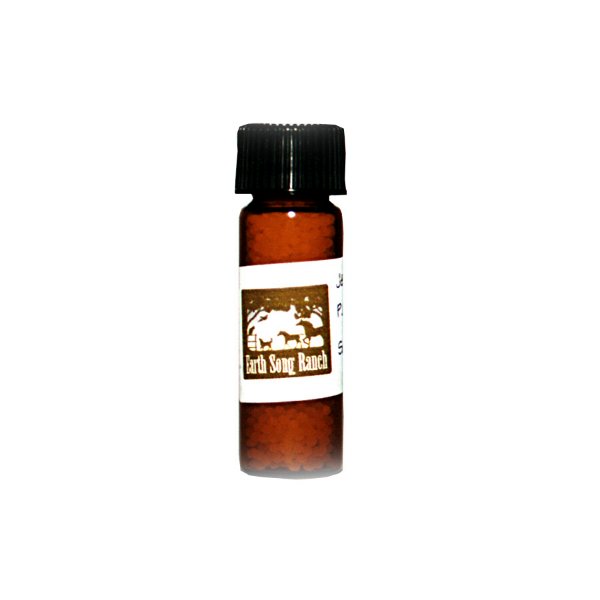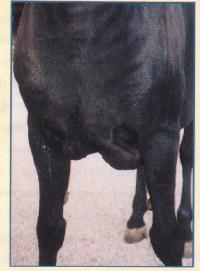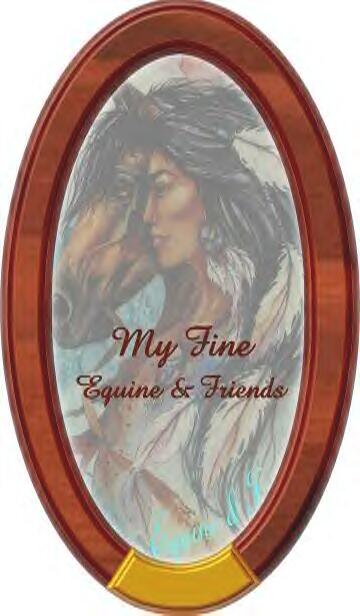
Horse, Dog, Cat, Nosodes
Equine Solutions Catalog Page 22a

NOSODES - by
(The Holistic Vet Clinic)
![]()
Herbal Wormer & Eye Health Support Herbs (Uveitis/Glaucoma)
Equine Equine-Zyme, Dog and Cat Equine-Zyme, Beta Glucan, Joint-Zyme, MSM, Glucosamine,
Mare, Foal, Stallion, Senior Zyme, Yeasture
for non-equine livestock,
Cushings, EPM, Hoof Builder, Tummy-Zymes
Pure Herbs and Herb Blends
Nosodes
![]()
Nosodes are Homeopathic Immunizations that are given in tiny sugar pill form,
monthly, that have no side effects, and are very effective in disease prevention.
all are 30C strength
See article below.

HORSES
1 dram bottles will last up to 5 horses 1 yr. 2 dram will last up to 10 horses 1. yr.
You can administer the little sugar pills between their lip and gums or you
can make a spray to spray on the gums. To build up the immune system,
Start out 1 time for 3 days in a row,
then 1 time per week for a month and then 1 time a month from there on to
maintain constant built up immune system.
If your horse, dog or cat already has an illness, we have homeopathic
protocols for them. Just email me to inquire: orders@myfineequine.com
Pigeon Fever wt 4 oz 1 dram $25.00 2 dram $45

“Corynebacterium pseudotuberculosis”, otherwise know as Dryland Distemper, Dryland Strangles, Bastard Strangles
or most commonly, Pigeon Fever.


What is Pigeon Fever?
The classic “Pigeon fever” is so-called because the abscesses usually form in the chest or pectoral region, causing
exaggerated swelling of the chest—ergo, a pigeon chest. The bacterium lives in the soil and is carried by flies.
Cases of pigeon fever are usually seen in the late fall to early winter, especially if the weather has been hot
and dry and the flies are more numerous later into the year.
In order for the organism to cause the disease in horses it must enter through a break in the skin. Flies transmit
the disease and they land on a horse with a break in the skin, they will congregate on that wound and the disease
enters the horse’s body.
When flies are bothersome, it is not unusual for horses to kick at their bellies, often creating small tears in
the skin that become the entry point for the infection. When the organism enters the horse it can cause several
different types of symptoms.
Among these are: The classic pigeon chest, in which abscesses form deep in the muscle tissue in the pectoral muscles;
Ventral midline infections (all along the belly); or an infection of the legs known as ulcerative lymphangitis.
Swellings that are visible and open to the outside are known as external abscesses. A further complication involves
internal abscesses, which we will discuss later in this article. The infection follows the lymph system once it
enters the horse and can go forward toward the armpits and chest, or back along the midline to the groin. The form
known as “ulcerative lymphangitis” impairs lymph drainage and the legs become grossly swollen, requiring intensive
nursing care. This form of the disease can require months of treatment.
What can you do?
The first thing you can do is to separate a horse suspected of having pigeon fever from the rest of the horses
on the farm and then contact your veterinarian for a proper course of treatment. The use of antibiotics for external
abscesses is controversial. There are some indications that the use of antibiotics where there are external abscesses,
especially early in the formation of the abscess, may cause the organism to go internally. If you have a horse
with the external abscess form of the disease, it would be wise to consult with your vet before beginning treatment.
Antibiotic treatment for internal abscesses, however, is vital.
Hot packing external abscesses and causing them to “draw” to a point so that they can be drained is a good management
practice. Flushing the abscesses once they have been drained will help them heal faster. Monitor the temp of the
horse and its attitude. If a mare has midline abscesses, it is also possible for her udder to become infected (as
can the sheath of male horses). Any pus or drainage from these abscesses is apt to be picked up by flies and transported
to other horses, so disposal of this material is necessary. Disinfect all surfaces with a phenolic compound to
lessen the chance of re-infection.
Internal VS external abscesses
The most common type of pigeon fever is manifested by either the abscess in the chest or along the midline. However,
any horse that has this type of infection is also at risk for forming internal abscesses. While very few horses
develop the internal abscesses, if they do, it can be fatal. Often the horse will present itself with depression,
fever, lameness (it is painful to walk), loss of appetite, etc. If internal abscesses are suspected, a rectal ultrasound
may be necessary to try to identify them. Antibiotic treatment is absolutely necessary in the case of internal
abscesses and your vet can best advise in the treatment protocol. Fortunately, this organism is sensitive to many
antibiotics.
Management Practices.
Once pigeon fever has made an appearance on your farm, you can assume it will be there forever. Therefore, programs
to reduce fly populations are the best defense to avoid further infection. Keeping paddocks and stalls as clean
as possible, removing all manure from the farm as opposed to manure mountains, composting manure to reduce flies,
use of fly-eating wasps and prudent use of pesticides are all ways to decrease the fly population on your farm.
Instruct your personnel to be alert, especially in the late fall and winter to any unusual swellings on horses,
or any signs of illness or lameness.
The prognosis for recovery is excellent with the external abscess form of pigeon fever, but more guarded for the
internal form. Be advises that it is also possible for an abscess to re-form, weeks or even months after all other
signs have ceased.
Use the Navigation Bars for quick and easy access.

You can contact us by Snail Mail at: